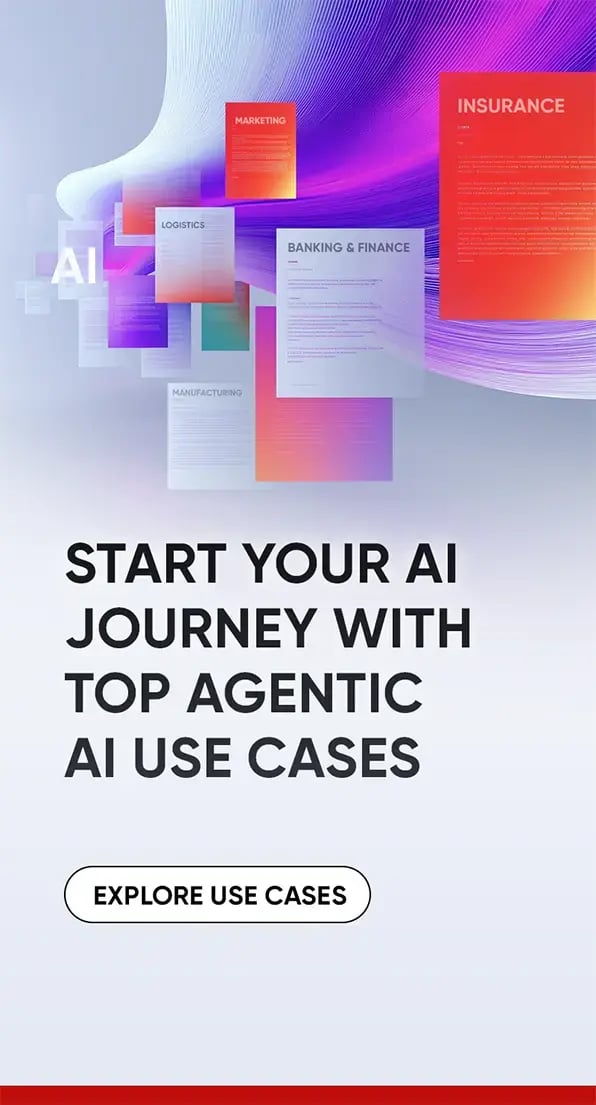AI Hype vs. Reality: Is Your Contact Centre Truly Ready?
by Dr Smrite Goudhaman, on Oct 3, 2025 3:12:49 PM
Analysts See the Gap and They’re Cautioning Leaders
Independent analysts agree: AI is not a silver bullet it is a multiplier. Gartner forecasts that agentic AI could autonomously resolve up to 80% of common customer problems by 2029. But they also warn that over 40% of early AI projects will be scrapped by 2027 due to immaturity in data, governance, and workflows. Everest echoes this: while enterprises are experimenting with AI across the contact centre, scalability depends on readiness robust data strategy, modular systems, and human-in-the-loop guardrails.
We see this in our own work. Across retail, financial services, government, healthcare, and education, many enterprises are asking: Can we trust AI to scale across millions of interactions? And the analyst answer is the same as ours: Yes , but only if the foundations are strong.

The Reality Behind the Hype
Hype: AI will replace agents, automate everything, and slash costs overnight.
Reality: Without readiness, AI creates more chaos than clarity.
Take the example of a global retailer. During seasonal surges, volumes spike by over 100%. Without omnichannel integration, AI bots trained in isolation struggle. Customers bounce from chatbot to live agent, repeating details three times eroding loyalty.
Or consider a government agency handling millions of citizen queries annually. Leaders hear the AI pitch “reduce queue times instantly.” But with fragmented vendor systems and no unified transcript history, the AI offers generic responses, forcing citizens to re-explain. The result: more frustration, not less.
Contrast that with organizations who invested in foundations:
- Unified logs across channels meant AI could recognize returning customers instantly.
- Process documentation gave bots a clear “decision map.”
- Governance ensured sensitive cases (claims, citizen benefits, medical queries) always escalated to a human with full context.
In these cases, AI didn’t replace empathy it amplified it.
What Readiness Looks Like
From working with enterprises across retail, healthcare, insurance, government, and education, we’ve identified five pillars of AI readiness.
- Data Maturity
An insurer who modernized early now maintains structured, unified transcripts across voice, chat, and email. AI can proactively remind policyholders of renewals, flag potential fraud, and surface claims before escalation. Without this clean data? AI would misclassify claims, leaving frustrated policyholders and regulatory exposure. - Process Discipline
A leading eyewear retailer’s contact centre had multiple vendors, each with different workflows. Early AI pilots failed because bots couldn’t reconcile divergent processes. Only after harmonizing the top 20 customer journeys order, return, prescription update could AI support continuity. The payoff: a 25% drop in call handling time. - Technology Integration
In higher education, proctoring services demand real-time AI plus human monitoring. Institutions relying on disconnected systems saw delays, false flags, and student dissatisfaction. By consolidating through an orchestration layer, AI can now assess 80% of low-risk cases autonomously while seamlessly handing edge cases to live proctors. - Governance & Guardrails
A public sector agency in Southeast Asia deployed AI assistants for citizen benefit inquiries. Without governance, early bots gave incomplete responses. By establishing a governance council monitoring model drift, ensuring compliance with local labour and privacy laws the agency reduced misinformation risk and improved satisfaction scores by 15%. - AI-Fluent Culture
Across industries, agents initially fear AI will replacustomerce them. We’ve seen pilots fail where leaders didn’t invest in training. Conversely, where agents were empowered using AI for summarization, next-best-action prompts, or automated QA adoption soared. Agents trusted the AI, customers benefited, and leadership could prove ROI.
Three Client Profiles: Where Do You Belong?
- The Piloteers
Vendors abound, each promising “quick wins.”
Pilots run in silos one bot for chat, another tool for QA, a separate analytics dashboard.
Results: fragmented experiences, agent fatigue, leadership skepticism. Within 12 months, momentum stalls. - The Experimenters
Have partial readiness: structured data in some channels, APIs in others.
Deploy AI successfully in low-risk domains like FAQs or billing reminders.
But without governance or unified orchestration, scaling hits limits. Leaders see ROI in pockets but hesitate to expand. - The Scalers
Possess mature data pipelines, harmonized processes, modular architecture.
Orchestrate AI across regions scaling 300+ FTEs across multiple hubs while transferring incumbent teams seamlessly.
Results: measurable 5–10% CSAT uplift, 20–30% spend reduction, and up to 58% run-cost savings within three years.
Where does your contact centre stand today?
The Datamatics Diagnostic: Are You Truly Ready?
We help enterprises diagnose readiness by asking:
- Do customers repeat themselves across channels?
- Can your AI access a unified customer history, not just fragments?
- Is there a governance council ensuring AI decisions are explainable and compliant?
- Do your agents view AI as a partner or a threat?
- Have your pilots delivered measurable impact within six months?
Answering “no” to more than two suggests you’re in hype mode, not readiness mode.
The Roadmap: From Hype to Reality
Phase 1 : Stabilize Foundations (0–6 months)
- Consolidate data streams into unified logs.
- Document top 20 customer journeys.
- Establish AI governance and human fallback.
Phase 2 : Pilot Safely (6–12 months)
- Use cases: agent assist, QA automation, summarization.
- Early wins: 5–7% AHT reduction, 2–3% FCR improvement.
Phase 3 : Scale Intelligently (12–24 months)
- Expand to predictive reminders, multilingual chatbots, proactive alerts.
- Expect 20–25% call deflection, 30% efficiency lift.
Phase 4 : Optimize & Innovate (24+ months)
- Introduce bounded agentic AI in safe domains.
- Target: double-digit CSAT uplift, measurable cost transformation.
Across regions, we’ve seen this approach de-risk complexity. Whether transitioning incumbent teams in Europe, scaling in Southeast Asia, or piloting in the U.S. retail and insurance markets, this phased model delivers consistent outcomes.
Why Enterprises Must Act Now
- Competition is unforgiving: Customers benchmark you against global giants. If your refund process takes days when a competitor offers instant resolution, loyalty evaporates.
- Digital natives are impatient: One in three abandon brands after a single bad experience and in retail, that number is even higher during seasonal surges.
- AI has raised the bar: Automation is expected. Personalization is assumed. What differentiates is empathy.
Delay means losing market share not to peers, but to those already scaling AI responsibly.
Conclusion: Separating Hype from Readiness
Gartner and Everest validate the shift. Our clients across retail, government, insurance, education, and healthcare prove it every day. The lesson is clear: the winners won’t be those who adopted AI first, but those who built the foundations to adopt it right.
Datamatics combines AI, automation, and human empathy with global delivery models delivering not just pilots, but transformation at scale.
This is the AI reality check. The question is not whether AI works. The question is whether you are ready.
Take the Datamatics AI Readiness Diagnostic. Discover where you stand and what it will take to scale. Contact us today to get started.

















